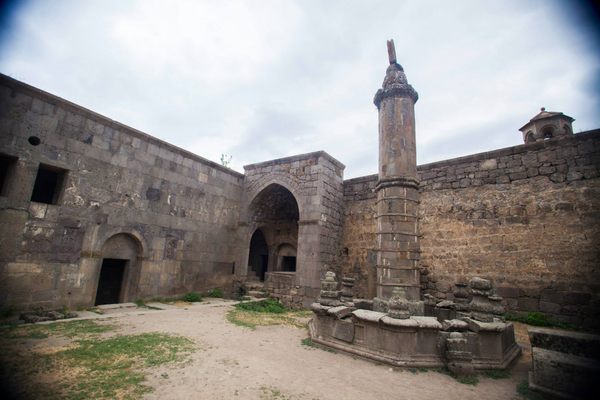About
In the town of Eleusis, ancient and modern celebrations find common ground at the Church of Panagia Mesosporitissa. The church is only open once a year, on the eve of the Presentation of the Blessed Virgin Mary, when people gather to celebrate mass and partake in a tradition that once honored Demeter, the Greek goddess of agriculture.
In ancient times, the roads that connected Athens to southern, central and northern Greece all passed through Eleusis. In Greek mythology, the goddess Demeter is said to have rested in Eleusis while searching for her daughter Persephone, who had been taken by Hades, the god of the underworld. To honor Demeter, a temple was built in the town and became the site of a mystic ritual known as the Eleusinian Mysteries.
Despite its strategic importance, Eleusis was a small village with few inhabitants, fewer buildings and many ruins when the area fell to the Ottomans in 1458, during the Byzantine-Ottoman Wars. Shortly after the fall of the Byzantine Empire, local residents built a church on the site of a ruined temple known as the Telesterion. This old temple sat above a cave that was once believed to be a passage to the underworld. At the top of a carved stone staircase they built a small, one-room arched basilica dedicated to the Virgin Mary, or Panagia in Greek, which translates to "the all-holy one."
By the time the Ottomans left the area in 1829 during the Greek War of Independence, Eleusis was still a small town with around 250 inhabitants. In the latter part of the century, merchants began taking advantage of the location and the population slowly grew. The town grew larger, and in the 19th century a bell tower was added to the church. Also during this time, built-in icons were added inside the church to compliment the many rare and unique icons from the 17th and 18th centuries. Today, the city is known as Elefsina, and it is home to some 50,000 residents.
The church is only open to the public on November 20 and 21, during the celebration of the Presentation of the Blessed Virgin Mary. On all other dates it must be admired from the outside unless special permission is granted by Greek Orthodox Church leadership.
Part of the annual celebration is based on an ancient tradition, where families would offer up the crops that they grew. Residents contribute boiled grains, which are mixed with raisins, pomegranates, and grape molasses to make a drink called polysporia (multi-seed). After church services, the polysporia is distributed along with offerings of bread and cakes, in celebration of a prosperous harvest.
Related Tags
Know Before You Go
To access the Church you must enter the Archaeological Site of Eleusis. The site is open Wednesday through Monday from 8:30 a.m. to 4 p.m. (closing times may change seasonally). Some years it closes on January 1st and other select holidays. There is a 6 euro entry fee (though there are many free entry days, exceptions and discounts that should be explored). This is an active archaeological site, so at times access to the church area may be restricted to the public. Archaeological staff should not be distracted from their important duties.
Dress codes vary from church to church in Greek Orthodoxy. If you wish to enter the church during the commemoration feast, a proper show of respect to the church and its members is achieved by modest clothing and proper behavior. For men shorts, sleeveless shirts and sandals are frowned upon. Women's shoulders should not be shown in church. Skirts and dresses should at a minimum come below the knee. Some churches ask that no leg be shown. Feet should be keep on the ground when seated, as is considered insulting for feet to face holy images.
Community Contributors
Added By
Published
March 9, 2020
Sources
- https://proseleusis.com/en/the-virgin-mary-patroness-of-farmers/
- https://orthodoxtimes.com/panagia-mesosporitissa-a-custom-that-meets-antiquity/
- https://www.ancient.eu/Eleusis/
- https://www.thenationalherald.com/269555/an-ancient-tradition-under-a-modern-guise-celebrated-at-ancient-eleusis/
- https://www.ancient.eu/article/32/the-eleusinian-mysteries-the-rites-of-demeter/
- https://discovergreece.ru/en/location/athens-attica/elefsina/




































